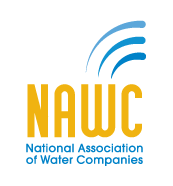From only running the dishwasher and washing machine when they’re completely filled to installing water-efficient plumbing fixtures, we can all take steps to reduce our water footprint to ensure there’s plenty of available water for future generations.
Installing water-saving fixtures not only helps conserve our water resources but also contributes to reducing energy consumption and utility bills. By conserving water, we alleviate the strain on water supply systems, promote sustainability and protect ecosystems. Water-efficient fixtures also provide enhanced comfort and performance without compromising functionality. Keep reading to learn the requirements to meet the coveted WaterSense Label.
What Are WaterSense-Labeled Products?
The EPA WaterSense program is an initiative established by the U.S. Environmental Protection Agency (EPA). Its primary goal is to promote water efficiency and conservation by encouraging the use of water-efficient products and practices. The WaterSense program sets performance criteria and standards for various products, including faucets, showerheads, toilets and irrigation controllers. Products that meet these criteria are awarded the WaterSense label, indicating that they are water-efficient, perform well, and help save water without sacrificing performance.
What Are WaterSense Requirements
Showerheads
Showerheads must meet maximum flow rate requirements to ensure water efficiency. Showerheads must not exceed 2 gallons per minute (GPM) to meet WaterSense requirements. Since showering accounts for about 17% of a household’s total water consumption, the EPA estimates that the average family can save 2,700 gallons of water each year by installing WaterSense-labeled showerheads. Meanwhile, less strain on your home’s hot water heater can save 330-kilowatt hours of electricity each year, or enough electricity to power your home for 11 days.
Bathroom Faucets
You can save thousands of gallons of water each year by turning off the faucet while brushing your teeth. You can take your water-saving efforts up another level by installing WaterSense-labeled faucets that meet the WaterSense requirements of a maximum of 1.5 GPM, compared to the standard flow of 2.2 GPM. Replacing old, inefficient bathroom faucets can save you about 700 gallons of water each year, or the equivalent of 45 showers.
Toilets
The maximum water consumption allowed for a WaterSense-labeled toilet is 1.28 gallons per flush (GPF), significantly less than the standard 1.6 GPF. According to the EPA, replacing inefficient toilets with WaterSense-labeled toilets can save 20-60% on water used for toilets, which can add up to 13,000 gallons of water savings each year. This puts more of your hard-earned money back in your wallet and significantly reduces your water footprint.
Irrigation Controllers
Irrigation controllers, which regulate outdoor watering systems, must have WaterSense-approved features to optimize water use. These features may include weather-sensing technology or remote access capabilities to adjust irrigation schedules based on weather conditions. Replacing a standard clock-based controller with a WaterSense-labeled irrigation controller can save an average home up to 15,000 gallons of water annually.
Indiana American Water Is Committed to Water Conservation
Indiana American Water is committed to water conservation. Installing water-efficient plumbing fixtures is an excellent component of your home’s overall water conservation plan. For more water conservation tips for inside and outside of your home, click here.



